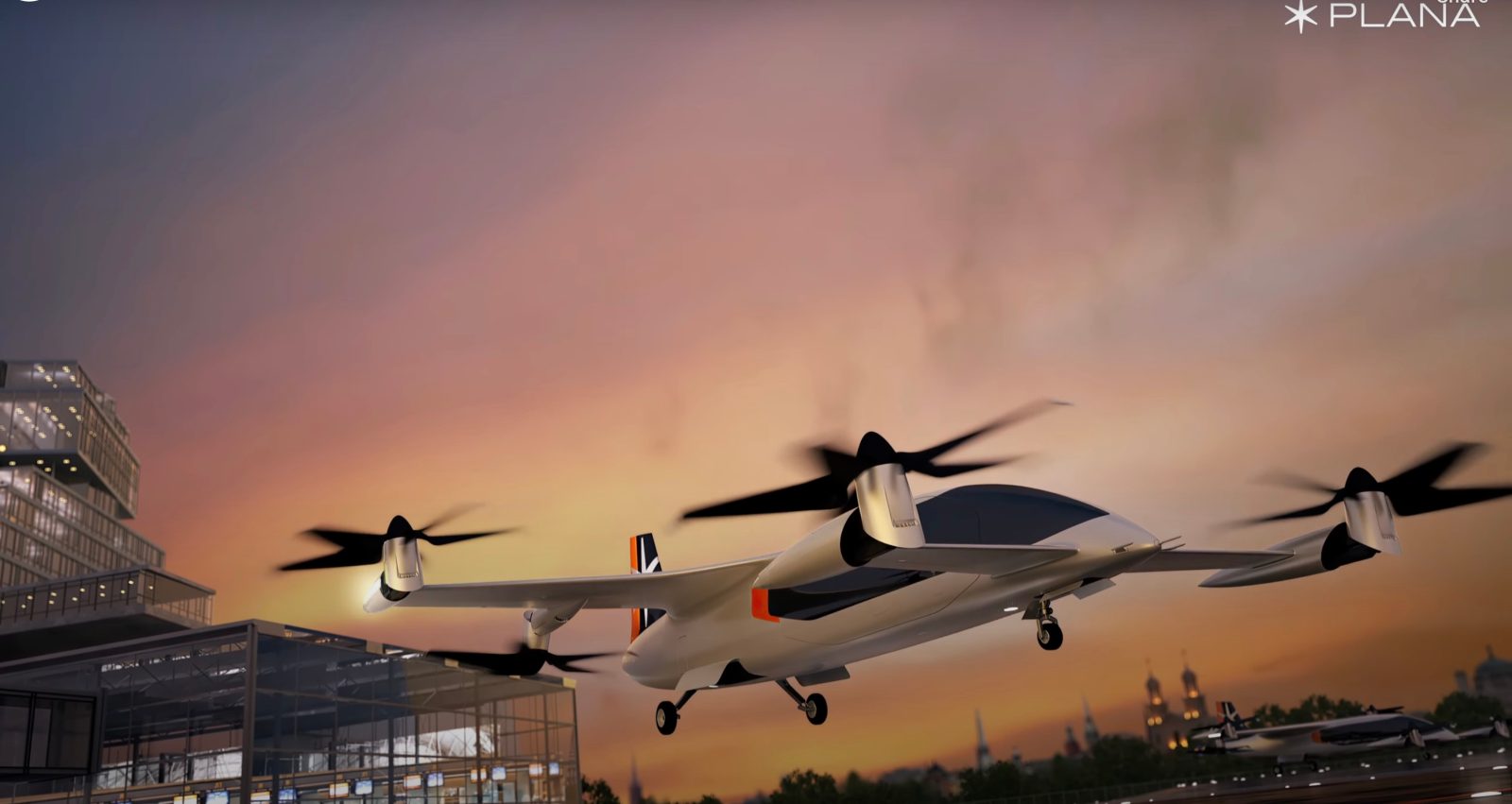
South Korean aircraft developer Plana doesn’t plan to introduce its first air taxi for a few years yet, but it’s already initiating work to create what it says will be Asia’s first international corridor for electric vertical takeoff and landing (eVTOL) flights between its domestic market and Japan.
Plana has signed a Memorandum of Understanding (MoU) with Osaka-based vertiport development and management company SkyScape Japan to prepare eVTOL flights between the archipelago and South Korea. In addition to what would be very long trips between cities in the two countries – 718-plus miles between their capitals, for starters – the accord also foresees developing a range of shorter-distance advanced air mobility (AAM) services within both nations.
Read: Volatus Infrastructure, Plana to sync vertiport construction with AAM aircraft development
Though the partners say the resulting international corridor would be the first in Asia for eVTOL operation, the claim may be somewhat of a misnomer given the use of hydrogen power in Plana’s six-passenger-and-pilot aircraft designs. Those currently involve a hybrid powertrain system to fuel the six-rotor craft to cruising speeds of 190 mph over a range of more than 310 miles. That distance is expected to expand to 500 miles through increased reliance on the greater flight capacities afforded by hydrogen compared to lithium batteries.
Even that, however, would come up short to power Plana eVTOL (plus hydrogen) planes between South Korea and Japan – not to mention popular inland departure and arrival routes on both ends. Presumably, then, the company plans on amping craft capabilities even more than previously announced.
As Plana moves its aircraft through development and certification processes – starting with test flights expected to begin later this year – the two companies will begin work on the air corridor through a joint concept of operations project. That will detail operations between the two countries, measure potential impact routes would have on communities within principal target areas, and recruit appropriate stakeholders for the preparation phase.
Using that base to build on, the partners also hope to extend their network to other Asia-Pacific nations.
“We are glad to sign an MoU with SkyScape, which is enthusiastically creating an AAM ecosystem in the APAC region,” said Plana chief operating officer Minyoung Ahn. “Through this partnership, we believe Plana and SkyScape will be able to co-develop a highly accessible aerial transportation network in Asia and realize it together for the benefit of the region.”
Its accord with SkyScape to create eVTOL services between, and in South Korea and Japan follows a deal Plana signed last week with vertiport developer Volatus Infrastructure to build networks on the US. As part of that, Plana eventually intends to establish a US office to facilitate the certification process of its craft by the Federal Aviation Administration.
Read: NUAIR unveils NY-Quebec AAM corridor development project
If created in time to claim the title of Asia’s first eVTOL corridor, however, Plana’s South Korea-Japan operation isn’t likely to be the first international route in the world.
Work toward establishing that precedent began last year through a partnership between the Northeast UAS Airspace Integration Research Alliance (NUAIR) and the Vports vertiport in Mirabel, Quebec. Those plans call for the creation of an operational zone dedicated to drone and AAM flights between New York and the Canadian province.
FTC: We use income earning auto affiliate links. More.



Comments